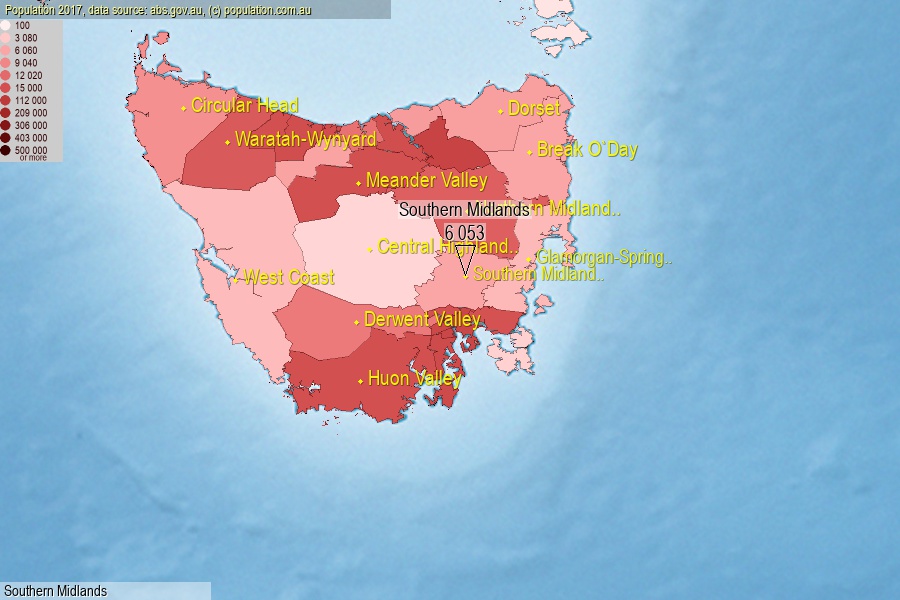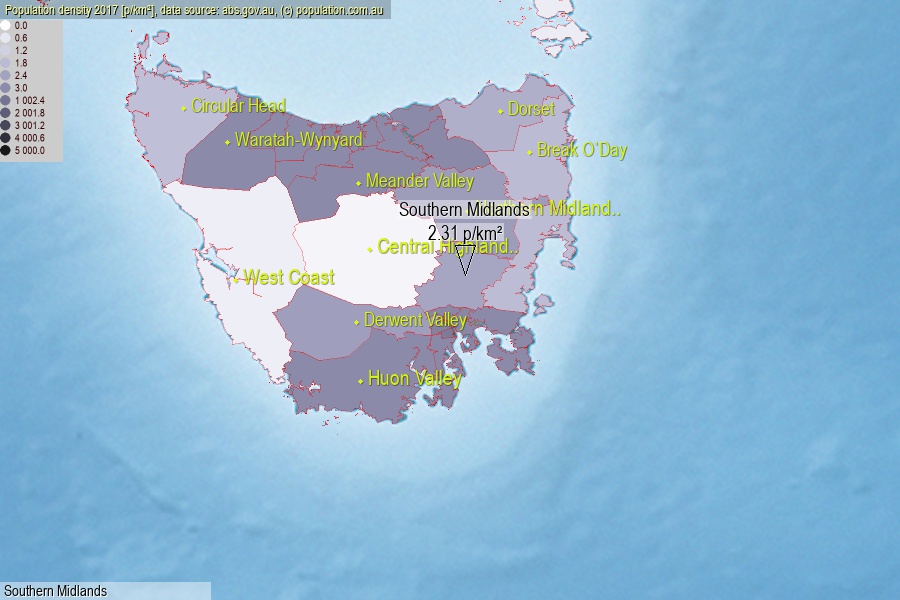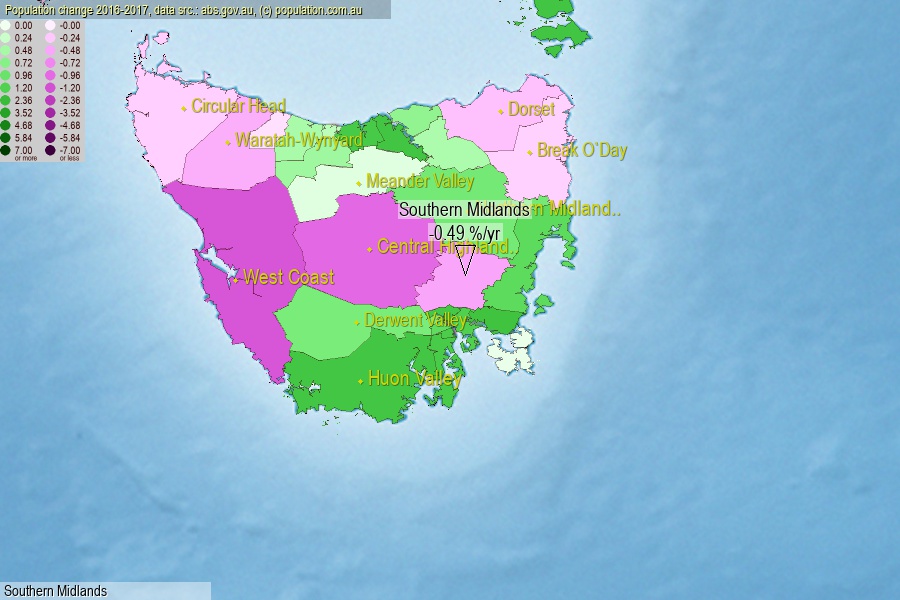 population.com.au
population.com.auLast official estimated population of Southern Midlands Municipality (as Local Government Area) was 6 053 people (on 2017-06-30)[2]. This was 0.02% of total Australian population and 1.149% of TAS population. Area of Southern Midlands is 2 615.50 km², in this year population density was 2.31 p/km² . If population growth rate would be same as in period 2016-2017 (-0.49%/yr), Southern Midlands population in 2025 would be 5 818. [0]



Click to enlarge. Southern Midlands is located in the center of the images.
Population [people], population density [p./km²] and population change [%/year] [2]
[1996-2001] +0.75 %/Y
[2001-2002] +0.36 %/Y
[2002-2003] +0.43 %/Y
[2003-2004] +0.57 %/Y
[2004-2005] -0.29 %/Y
[2005-2006] +0.24 %/Y
[2006-2007] +0.85 %/Y
[2007-2008] +1.61 %/Y
[2008-2009] +2.20 %/Y
[2009-2010] +1.71 %/Y
[2010-2011] +0.30 %/Y
[2011-2012] -0.34 %/Y
[2012-2013] -0.98 %/Y
[2013-2014] -0.71 %/Y
[2014-2015] -0.70 %/Y
[2015-2016] -0.21 %/Y
[2016-2017] -0.49 %/Y
[0] Calculated with linear interpolation from officially estimated population
[1] Read more about LGA and Australian Statistical Geography Standard (ASGS) on abs.gov.au
[2] Population data from Australian Bureau of Statistics (Population and density: 2017; change: 2016-2017)
[3] Digital Boundaries: Australian Statistical Geography Standard (ASGS) 2016.